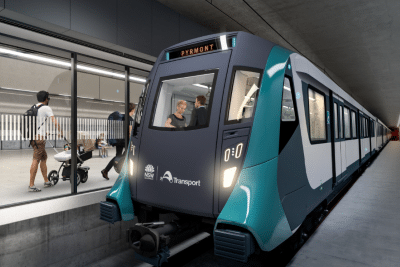2024 promises to be a year of significant milestones. Spanning the globe, these engineering projects offer a glimpse into the future of urban landscapes and infrastructure development.
As we approach the completion of several significant global construction projects, it’s important to recognize the immense effort and collaboration involved.
These endeavors represent more than just architectural feats, they symbolize progress, innovation, and the collective ambition of communities worldwide. Each project reflects a vision for the future, demonstrating a commitment to enhancing infrastructure, connectivity, and quality of life.
Engineering Extravaganzas
Let us look at the engineering projects set to be completed in 2024.
Nusantara
Since 2022, eastern Borneo in Indonesia, has seen rapid changes. Roads were built, and buildings went up near Balikpapan Bay in Eastern Kalimantan. This was due to Indonesia’s plan to create a new capital city.
Jakarta, the current capital, faces many problems like flooding and air pollution. It’s also sinking because too much water is taken from the ground. So, Indonesia decided to move the capital to Borneo.
Stretching across 2560 square kilometers, this ambitious development is slated to be inaugurated on Indonesia’s Independence Day, 17 August 2024.
These USD $52 billion (AUD $78 billion) projects have engaged various types of engineers, including civil, environmental, geotechnical, urban planners, structural, water resources, transportation, and electrical engineers.
They have collaborated to design critical infrastructure, assess environmental impact, ensure structural safety, plan city layout, manage water resources, develop transportation systems, and meet energy needs.
Metro System
Sydney, Australia’s expansive metro system is undergoing a significant expansion to meet the city’s growing needs. Spanning 30 kilometers, the new line will traverse beneath Sydney Harbour, connecting to additional Central Business District (CBD) stations set to debut in 2024.
Described as a game-changer for transportation, this project is hailed as “arguably the most transformative piece of transport since the Harbour Bridge.”
Sydney Metro is Australia’s most technologically advanced railway, and is Australia’s only fully accessible, driverless train service. It will have a target capacity of about 40,000 customers (about twice the seating capacity of Madison Square Garden) per hour.
With a hefty price tag of USD $20 billion (AUD $30 billion), “Australia’s biggest transport project” ranks among the world’s largest suburban rail initiatives, rivaling even the Grand Paris Express.
The expansion of Sydney’s metro rail network by 113 kilometers and the addition of approximately 46 new stations by 2030 involves civil, electrical, mechanical, structural, transportation, environmental, geotechnical engineers, and urban planners.

They collaborate to ensure successful planning, design, construction, and operation, addressing technical challenges and meeting the city’s evolving transportation needs.
Tren Maya
The route of the Tren Maya also known as the Mayan Train, in Yucatan Peninsula, Mexico connects five states in the southeastern region of México with safe and modern trains through 1,554 kilometers of railway tracks. The inauguration date of the Tren Maya was 15 December 2023, for one section. By June this year, all sections with their stations and stops will be operational.
The Mayan Train will provide service to local passengers, tourists, and freight transportation, with a maximum speed of 159 kilometers per hour.
Spanning distanced kilometers, this intercity railway project aims to strike a balance between tourism development and environmental preservation. Yet, concerns linger regarding its ecological impact, prompting calls for sustainable practices.
This ambitious project, with a significant cost of USD $41 billion (AUD $62 billion), involves civil, electrical, mechanical, environmental, structural, transportation, geotechnical engineers, and urban planners.
They collaborate to ensure the successful planning, design, construction, and operation of the intercity railway, addressing technical challenges and balancing objectives with environmental considerations.
Iconic Tower – New Administrative Capital
Envisioned as the crowning jewel amidst the ensemble of 20 towers within the CBD of the New Administrative Capital in Egypt, a visionary megaproject initiated by Egyptian President Abdel Fattah El Sisi in 2015, its emergence signifies a transformative chapter for Egypt’s architectural landscape.
In June 2021, the concrete skeleton of the towering 385-meter Iconic Tower reached semi-completion, marking a significant milestone in its construction journey. Later that year is when the country anticipated to witness the finalization of the steel framework, paving the way for the comprehensive assembly of this architectural marvel.

However, with unforeseen circumstances the tower is just 5% away from being complete.
Ahmed Al Banna, the project overseer for the CBD from Dar Al-Handasah, reflects on the significance of this endeavor, “This heralds a new era for Egypt, an era defined by the ascendancy of skyscrapers and monumental edifices. The Iconic Tower embodies the ethos of the new capital, serving as its quintessential emblem. It epitomizes the unwavering commitment of the government and the president towards establishing a modern metropolis endowed with all requisite amenities.”
The construction of the Iconic Tower in the New Administrative Capital of Egypt is spearheaded by China State Construction Engineering; therefore, a diverse range of engineering disciplines would be required. This ambitious project, symbolizing Egypt’s bold leap into modernity, involves civil, structural, mechanical, electrical, architectural, and geotechnical engineers.
They collaborated to ensure the successful design and construction of the tower, which comes with a staggering cost of USD $4.4 billion (AUD $6.6 billion).
Restoration of Notre Dame
In Paris, France, the restoration of Notre Dame Cathedral has been a monumental endeavor since the tragic fire of 2019.
With significant portions of its interior and iconic spire ravaged by the flames, the task of rebuilding this iconic landmark has been formidable. Despite facing numerous challenges and a staggering cost exceeding $900 million (AUD 1.3 billion), progress has been made.
Though much of the cathedral remains shrouded in scaffolding, there is hope on the horizon. Miraculously, a significant portion of Notre Dame is slated to reopen by the close of 2024, aligning with President Emmanuel Macron’s deadline.
While the intricate work on the interiors may require additional time, strides have been made towards restoring the exterior, including the famed spire, to its former grandeur.
This monumental endeavor involves a team of skilled engineers and professionals, including structural, architectural, civil, mechanical, electrical, materials, and environmental engineers, along with project managers.
Navi Mumbai International Airport
About 22 miles southeast of Mumbai, India, a USD $3.1 billion (AUD $4.6 billion) airport project is underway in Navi Mumbai, led by the Adani Group.
Scheduled to be complete by the end of this year, the airport aims to accommodate 20 million passengers initially, with plans to expand to 90 million by 2032. Adani Group CEO, Arun Bansal sees it as a potential international transit hub.
The project reflects India’s broader infrastructure push, with substantial aircraft orders and plans for dozens of new airports. However, its journey has been marked by the complex task of resettling thousands of households, highlighting the social challenges inherent in such projects.

A diverse team of engineers, including civil, structural, electrical, mechanical, environmental, transportation, and aeronautical engineers, collaborate to plan, design, and construct complex projects like airports and infrastructure.
Santiago Bernabéu Stadium
Introducing the revamped Santiago Bernabéu Stadium, in Madrid, Spain. This state-of-the-art Real Madrid stadium reigns at USD $1 billion (AUD $1.5 billion).
The stadium has undergone a stunning makeover, proudly proclaiming itself as the “best stadium in the world.”
The transformation is evident in the massive wraparound facade, with steel strips and illuminated stripes, creating a display that comes to life at night with vivid images and videos. Capacity has been boosted from around 81,000 to 85,000 seats, complemented by a retractable roof and newly added terraces.

But what truly sets this stadium apart is its innovative retractable pitch, designed to be segmented and stored underground. This feature not only ensures pristine playing conditions but also cleverly accommodates the metro line passing beneath, a testament to meticulous planning and engineering ingenuity.
Expanding a stadium involves a multidisciplinary team of engineers including civil, structural, mechanical, electrical, architectural, environmental, and project managers.
They collaborate to ensure the project’s success, addressing various aspects from site preparation to structural stability, HVAC systems, lighting, environmental impacts, and overall project management.
As these mega-projects near fruition, they emphasize the boundless ambition and collective effort required to shape our modern landscapes. Beyond their architectural grandeur, they serve as testaments to human innovation and the enduring quest for progress.
References


